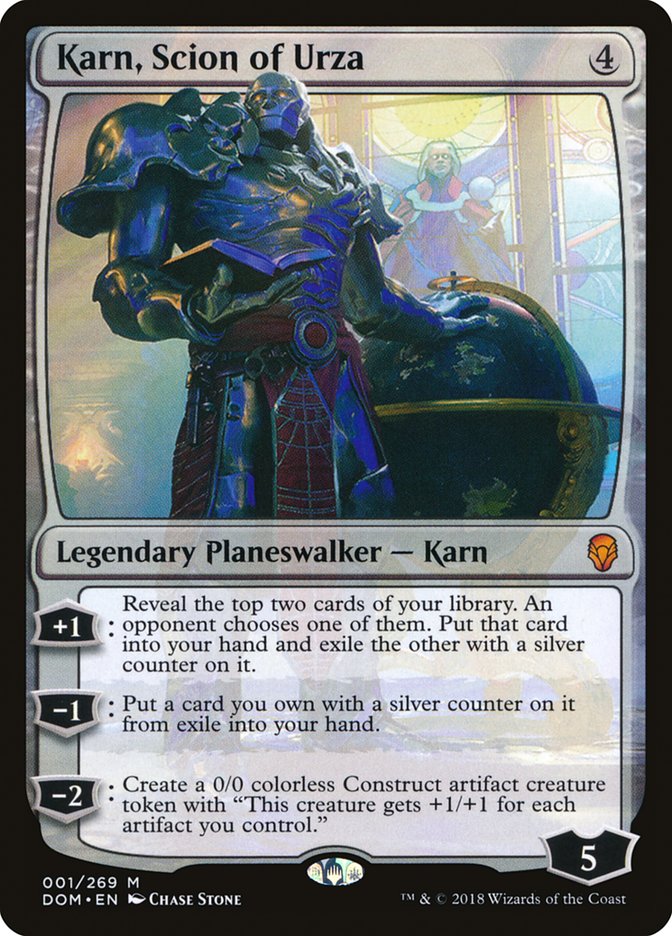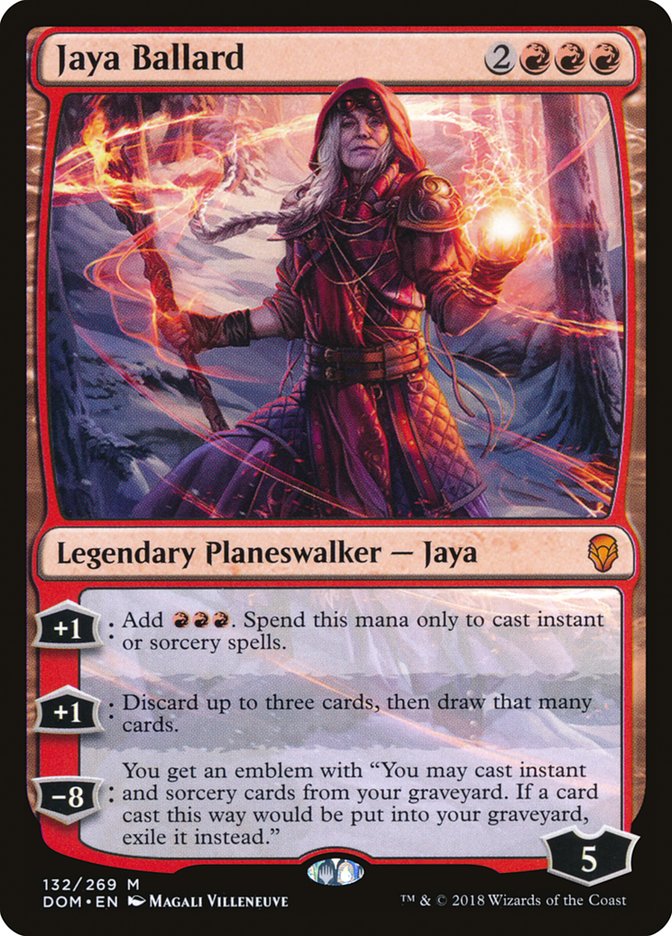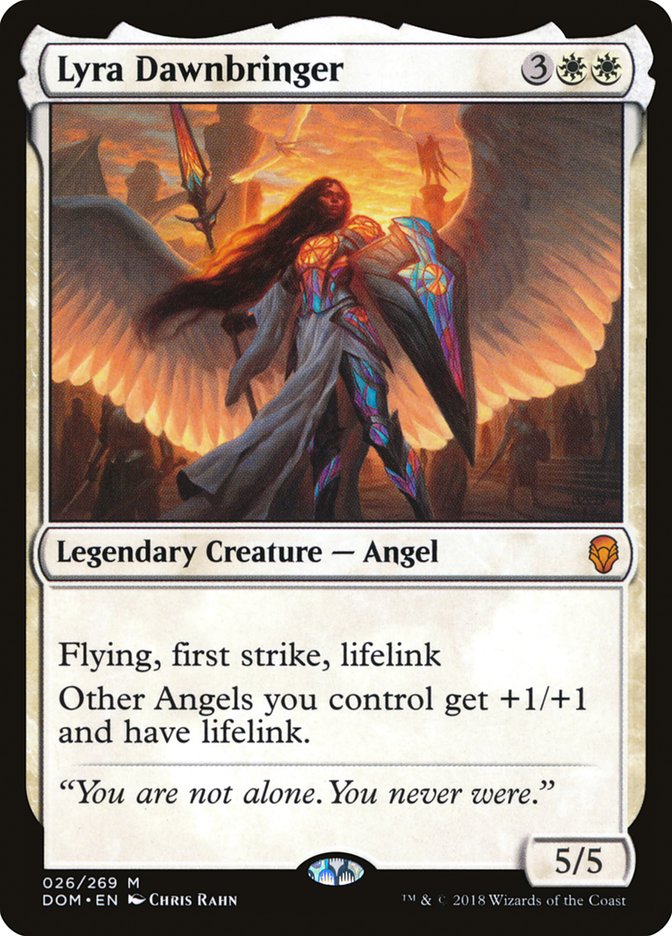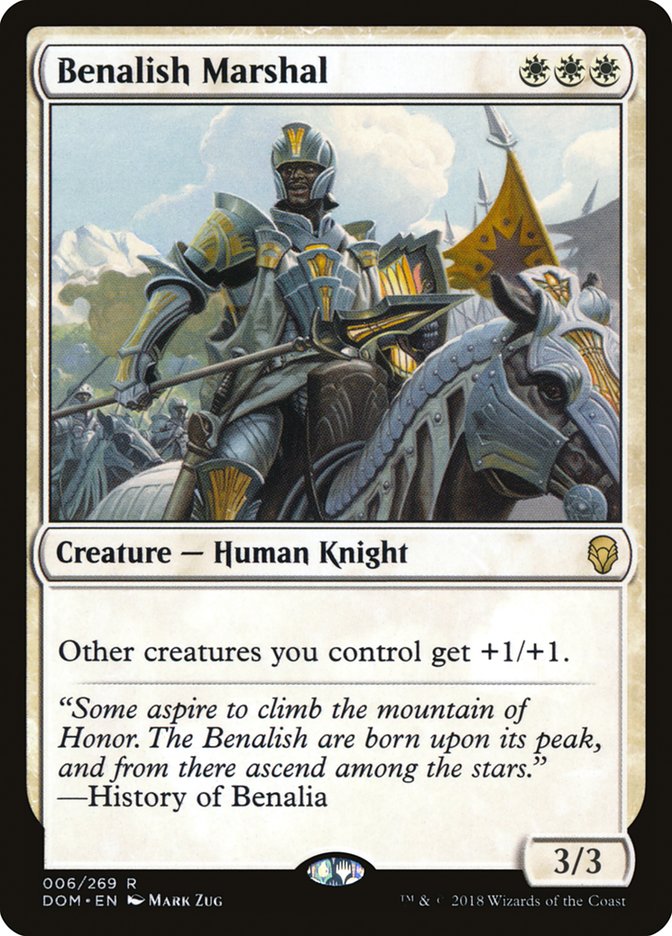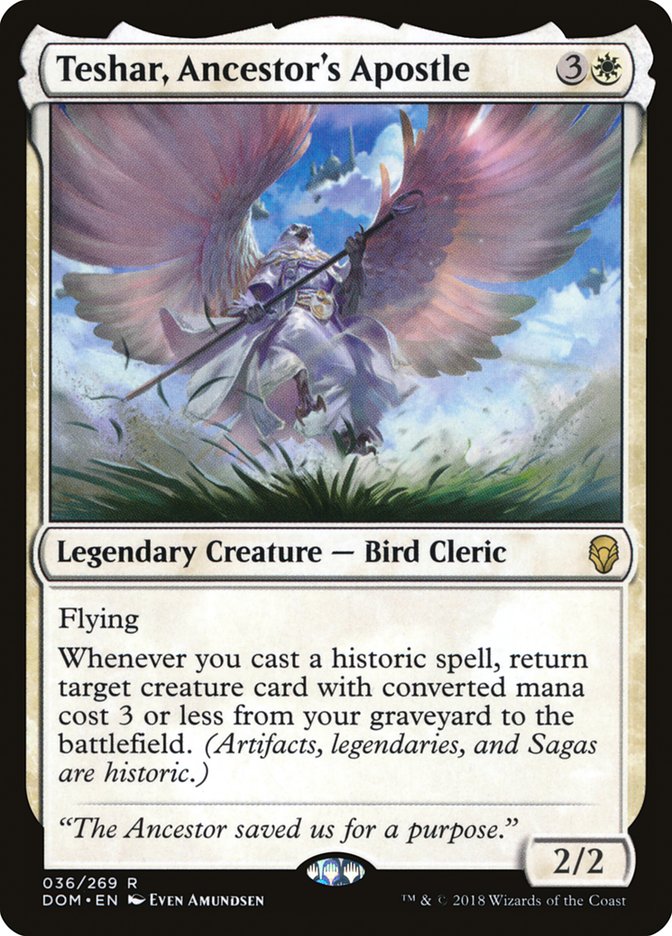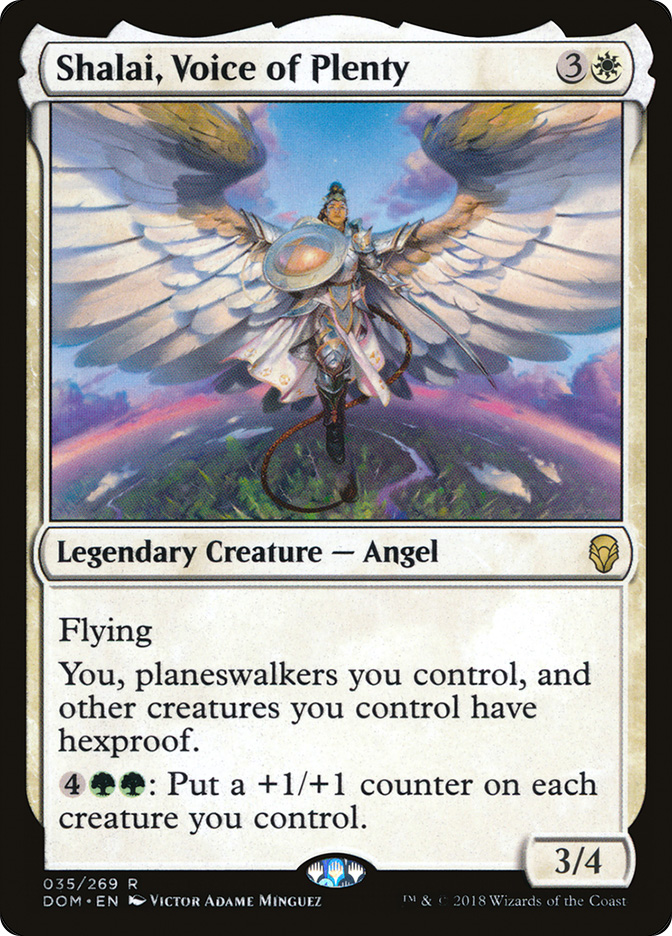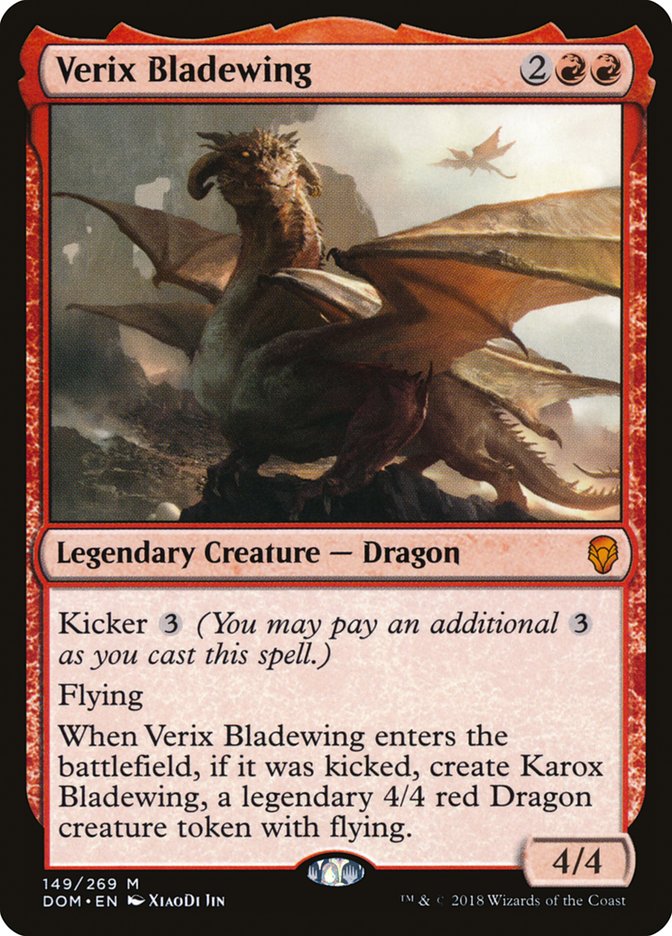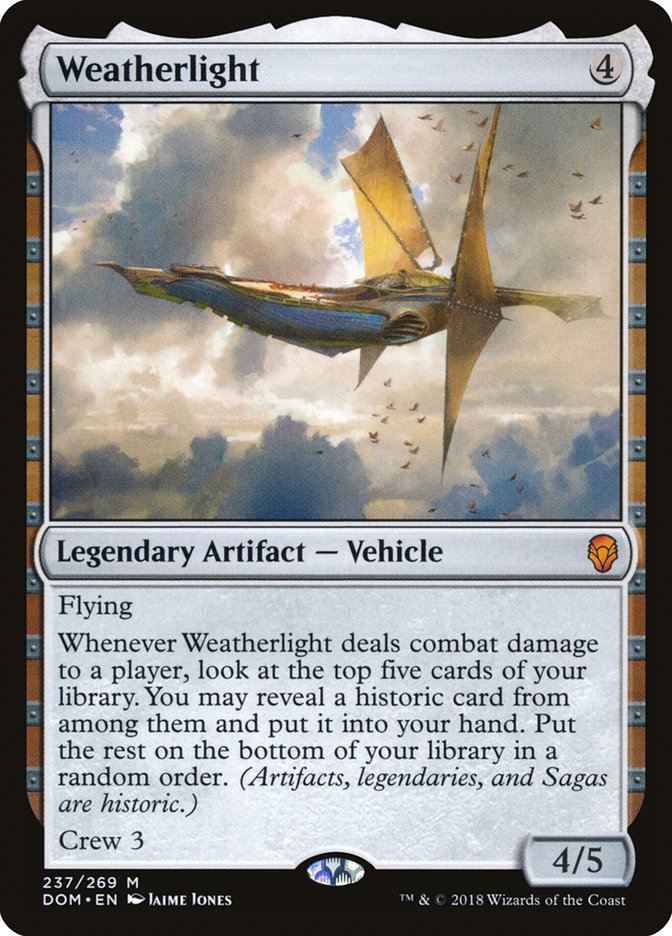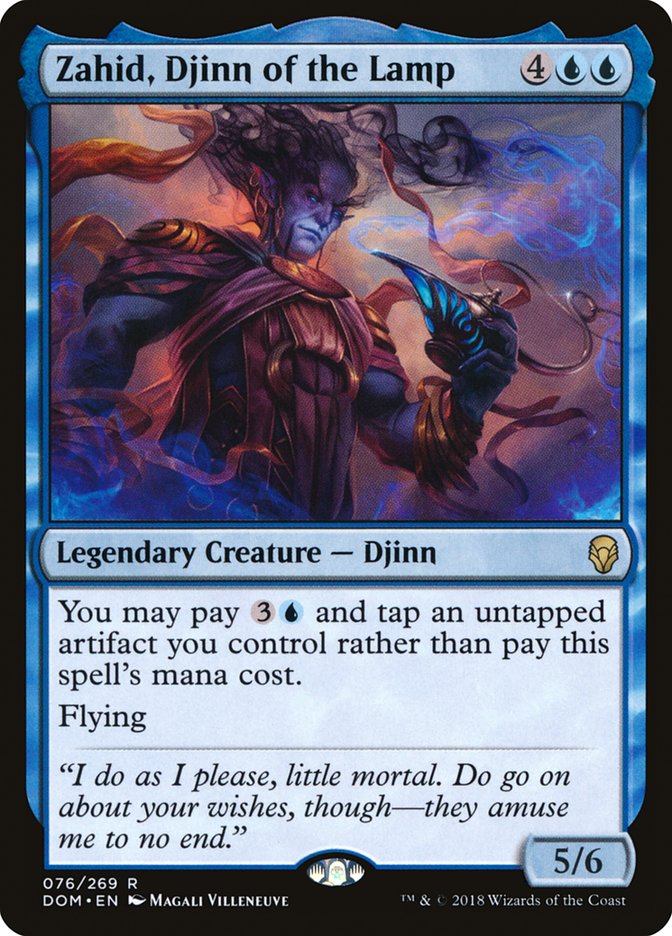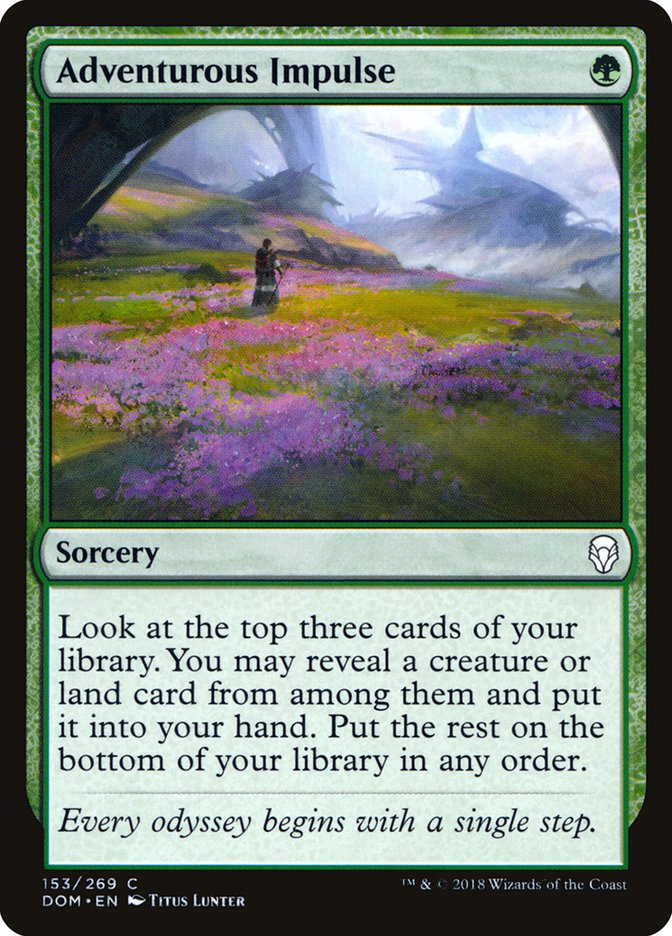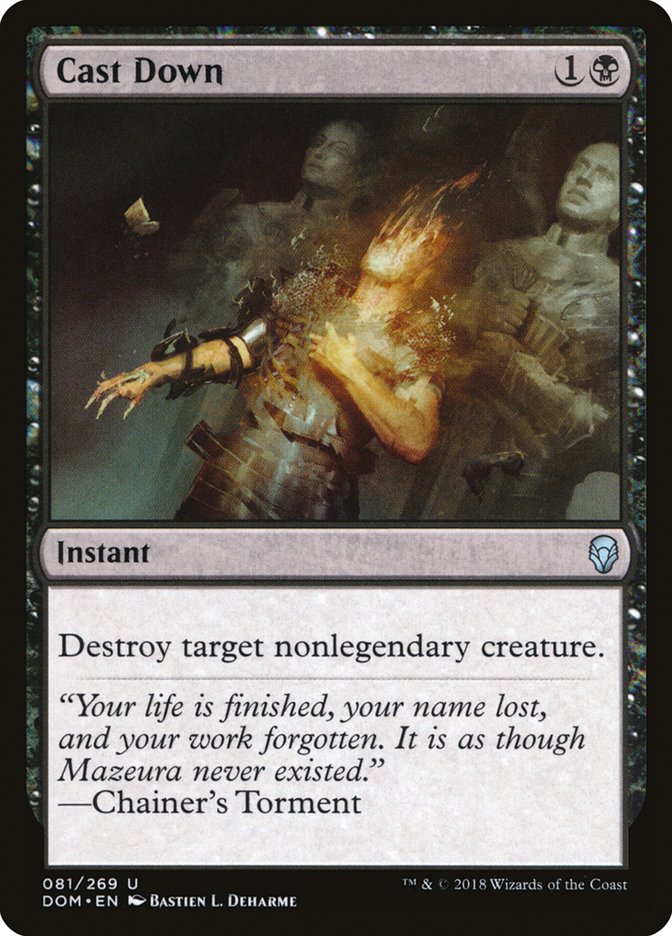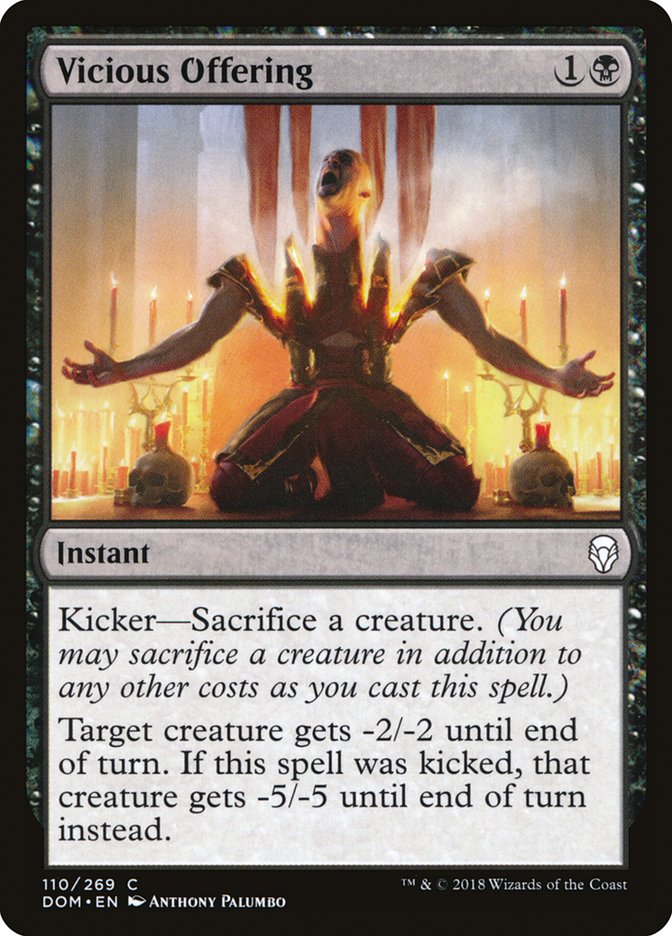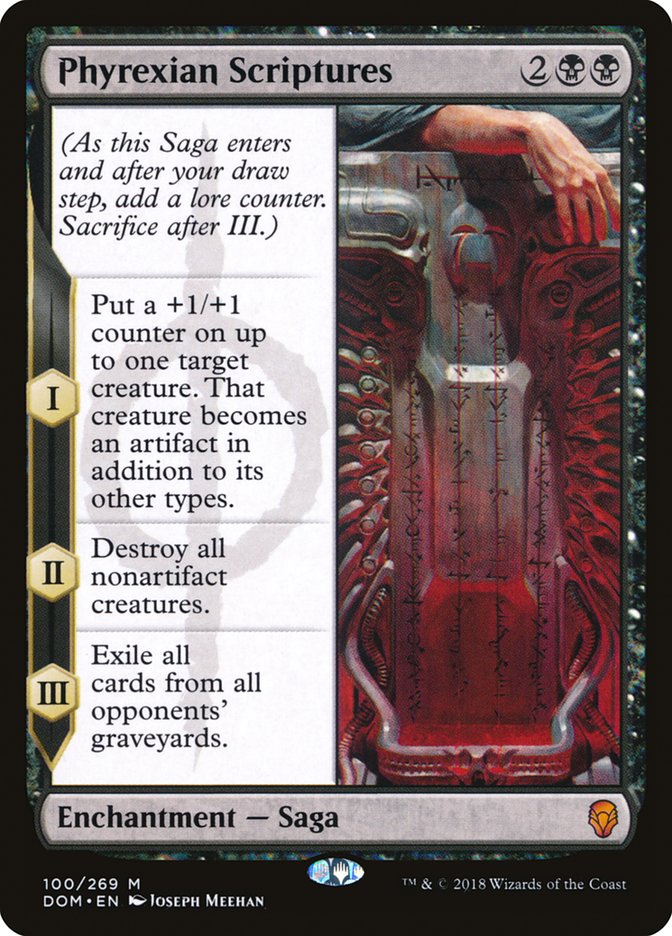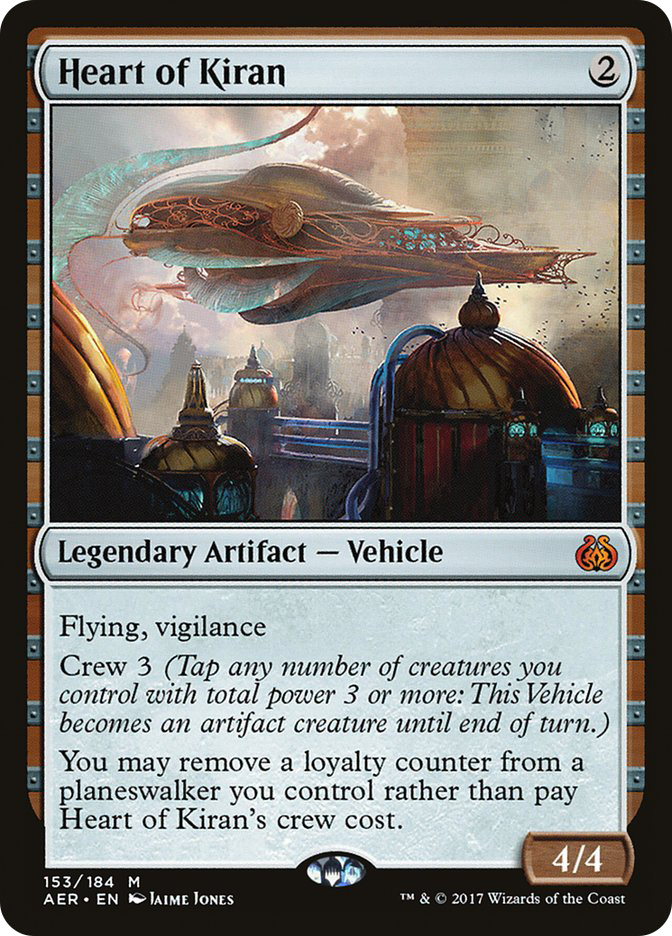A little over a week ago, Sam Black opened an article with the following:
“I’ve learned something about myself. As a brewer, when I read over a spoiler, I’m not looking for the best cards. I’ll skim right over an Abrade like it’s nothing.”
That really struck a chord with me, as over the years I’ve become the exact opposite. I love digging through preview season looking for individual cards that can interact in the current Standard landscape, knowing full well that something that the brewers concoct may very well change everything.
After all, you never really know what’s going to happen during preview season, but facts do remain facts. Glorybringer is still going to kill creatures with four toughness, but we at least now have two-mana removal that kills it.
Today I’m going embrace who I am. I’m not going to try to step on any of my coworkers’ toes and try to brew up some crazy decks. That’s just not me and I’d probably do it worse than they would anyway. I’ll leave Lich’s Mastery for Patrick Chapin; Muldrotha, the Gravetide for Todd Stevens; and whatever cards Sam Black likes to Sam Black. Today I’m going to look through Dominaria under the scope of whether certain cards pass “The Standard Test,” and trust me when I say I’ll be grading on a (mana) curve!
The Bard Narson Grading Scale
Before we get into the cards themselves, I’ll define what I look for in new cards. Right off the bat, expensive synergies get docked a grade. Cheap cards that need synergy will be given a closer look. Expensive synergies are just not good enough nowadays. Take U/W Gift, for example. It got a lot of professional players all hot and bothered these past few weeks since it looked like a deck worth playing, but at the end of the day, the cheeky U/R Gift took all the thunder away.
That’s because it used synergies designed by Wizards of the Coast and thus didn’t have as many hoops to jump through. What looks good on paper isn’t always what is good in practice. The cheaper the synergy, the better chance it will have in Standard. Period.
What I’m looking for is cards that can hold their own on the battlefield. For example, The Scarab God deserves an A, as it’s difficult to kill with its five toughness, gives you something to do with your mana, and has an immediate impact on the battlefield. One less toughness would greatly diminish its grade, as then it could be killed by Chandra, Torch of Defiance and Glorybringer.
Cards that win the game all by themselves aren’t the only cards that can get the best grades, though. Great removal deserves attention as well, as mythic rares wouldn’t get a chance to shine without them. There wouldn’t have been Temur Energy without Harnessed Lightning, and “Snek!” would just be a meme without Fatal Push to boost Winding Constrictor.
Also, don’t look too deep into my grades. They are, after all, just a mnemonic device that breaks up the monotony of evaluating new cards. How could I really grade these cards before they even step foot into Standard?
The first three cards taking The Standard Test are the planeswalkers from Dominaria, three iconic characters from the storybooks and three interesting pieces of cardboard being introduced to the vicious Standard format.
I discussed Karn, Scion of Urza in great detail last week, so take a quick look at that if you missed it. My opinions haven’t really changed. There’s a good chance that some sort of artifact deck comes out of Standard that can utilize its -2 ability, but without that, this card doesn’t seem that great to me.
Card advantage is extremely important in Standard right now, but we aren’t just drawing cards with these effects. Champion of Wits is either being eternalized to create a 4/4 body or cheated onto the battlefield via God-Pharaoh’s Gift. Chandra, Torch of Defiance can enter the battlefield and kill a creature or generate mana to cast things like Abrade or Lightning Strike to keep the battlefield clear of danger.
Karn, Scion of Urza is just…drawing cards.
Now, of course this can be put into any deck, which is a big boon for its chances in Standard, but that doesn’t change the fact that it feels more like a role-player than the game-changer.
Grade: D+
“Because he’s the hero Dominaria deserves, but not the one it needs right now. So we’ll hunt him. Because he can take it. Because he’s not our hero. He’s a silent guardian, a watchful protector. A Planeswalker once more.”
I wanted to hate Teferi, Hero of Dominaria. A U/W planeswalker that draws cards? Yuck!
I wanted to… But I can’t…
Teferi is just too good not to love. Both of its non-ultimate abilities can protect it in one way or another. It starts with four loyalty and goes up to five upon initial activation, which is a healthy number, and its +1 isn’t overpowered, as the lands untap at end of turn. Teferi just looks like an all-around good planeswalker that will fit nicely in Standard without dominating it.
A card to keep in mind for decks that want to support Teferi is Seal Away. It’s a conditional removal spell that can normally be played around, but not when an opponent is pressured by a planeswalker taking over the game. Of course, two-mana counterspells will also be great in a deck with Teferi, but having some instant-speed removal to protect it is always nice.
All this said, I’m unsure if Teferi has a ready-made home. Approach of the Second Sun doesn’t seem like a deck that has the time or resources to tap out unless it’s killing everything on the battlefield, and Torrential Gearhulk might not want to give up its best buddy The Scarab God. It doesn’t really matter, though, as Teferi is a planeswalker that removes other planeswalkers from the battlefield. That alone will cause decks to work around it and not the other way around.
Grade: B
For every Chandra, Torch of Defiance, there has to be a Tibalt, the Fiend-Blooded. It pains me to say this, Jaya, but you’re a Tibalt.
Jaya costs five mana but can’t protect herself outside of her high loyalty, which isn’t even that high when you consider the initial mana investment. The bigger problem is that her abilities aren’t even that great. Her first ability looks like a hoity-toity knockoff of Chandra, Torch of Defiance’s mana ability. Sure, it’s one more mana, but it has its own limitations. It could be used to great effect, but rarely do spell-based decks that want “cheapening” effects do anything in Standard.
Everyone remember Baral, Chief of Compliance? This card just didn’t have enough to do in Standard, causing it to see minimal play, but it shines in a format like Modern where it has more things to do. Jaya feels similar to Baral in that regard but costs way too much to impact Modern.
Jaya’s second ability lets you get rid of cards when you don’t have anything worthy of casting off its first ability, which is cute but ultimately not good. I want more out of my planeswalkers when I get to untap with them. I don’t want to go digging for action or casting cards I otherwise couldn’t without it on the battlefield.
Grade: F
All-in-all, I like what they did with the planeswalkers in Dominaria. We’ve needed a great U/W planeswalker for some time, we didn’t want a super-busted colorless four-drop ruining Standard (again), and red is the last color that needed a format-defining planeswalker. These cards look great for the health of Standard while also creating cards for more casual players to have fun with.
Grade for Planeswalkers: B+
Next up are some of the creatures on Dominaria. I can’t get around to all of them, so I selected those that jumped out at me, both good and bad.
Thank the heavens we finally have a large lifelinking creature in Standard to combat Hazoret the Fervent and its band of misfits! I could make a joke that Angel of Invention is that lifelinking boom-boom, but that seems like low-hanging fruit. Instead I’ll compare this card to Baneslayer Angel, since there’s no way anyone else has done that.
They have? Well, I got nothing, then…
Lyra’s going to see play, I’d guess a decent amount, even though she sits on top of every other great white card in this format. Maybe there’s an Oketra’s Monument deck that’s desperate for this type of effect, but it seems like those decks struggle to fight against The Scarab God and God-Pharaoh’s Gift strategies already. That said, Lyra stands alone as one of the most powerful creatures in the format. It doesn’t even die to Doom Blade!*
* That this format’s Doom Blade doesn’t kill legendary creatures is the joke, and yes, I know other removal spells kill Lyra. Now, don’t go taking my joke literally and need to comment on how I’m wrong about…and you already did. Well then.
I loved me some Baneslayer Angel action back in the day. That said, I don’t think Lyra is going to influence Standard as much as Baneslayer Angel once did. The format’s just not set up for it right now. There’s a slew of great removal spells and a higher density of it as well, given how important it has become to kill The Scarab God and Hazoret the Fervent. Lyra will win many games it’s not killed in, but legendary status will also keep Lyra from being a four-of in any white strategy. I could see Lyra seeing more action from the sideboard than defining how we build white decks moving forward.
All this said, we at least now have a perfect card for when red-based aggressive decks want to take over the metagame.
Grade: B-
This cycle really needs a nickname. “The Triple-Costed Threats?” That doesn’t really have a good ring to it. How about “The Three-Mana Monsters?” Again, not good enough. Okay, maybe they don’t need a nickname, but they sure could use an evaluation!
Cards like these never really catch my eye, as I don’t put much stock in mono-colored decks. That doesn’t mean I don’t play them when they’re good, but rarely are they actually good enough. These types of creatures also rarely make a bad mono-colored strategy suddenly good enough, as they’re simply role-players that tend to make already existing mono-colored decks better.
Maybe down the line we might see an upcoming set make mono-color cards matter like Theros, but until then I just don’t see the bulk of this cycle doing much in Standard. The only two colors that I believe can hold their own alone are white and red, meaning that I’ll focus on Benalish Marshal and Goblin Chainwhirler. The other three get Grade: D.
Unless you keep count for how many cards I grade and realize I technically graded eighteen of them, not fifteen. Then these cards didn’t get graded for continuity’s sake.
Benalish Marshal looks like it’s going to compete with the other three-drops in this format, but that’s not entirely true. Benalish Marshal can be cast on Turn 3, but it’s going to be more effective down the line by playing out the “fodder” first and then deploying it when the coast is clear of removal.
Anthem effects are always strong in Standard and we’ve seen that lately in the format via Shefet Dunes, but that effect has a downside of not progressing the battlefield like Benalish Marshal. Now white-based aggressive decks can have redundancy when their trying to swarm the battlefield before pumping up the team.
I’m excited to see what this card can do in the format. I don’t have high hopes for Benalish Marshal, but wouldn’t be surprised if this card sees some serious action in Standard.
Grade: B
Now this is a red creature! Glint-Sleeve Siphoner has done some serious damage to Standard as of late, which already should give Goblin Chainwhirler some serious consideration, but that’s not the only creature that’s taking damage. Goblin Chainwhirler deals one damage to everything they have! That allows the weaker early creatures to trade up at the bare minimum, yet also can clear away planeswalkers, chump blockers, and anything else in the way.
It can also come down later in the game to screw up blocking against a Hazoret the Fervent. I expect this card to see a ton of play and it should catapult Mono-Red Aggro back to being annoyingly good.
Grade: A
Next, we have two white creatures that may not look similar at first, but I believe they share the same weaknesses.
Both cards can be absolutely disgusting with enough resources, yet lackluster when the well is running dry. These are great examples of expensive synergy-driven cards. Teshar, Ancestor’s Apostle needs to be on the battlefield, have creatures in the graveyard, and have historic spells in hand to properly function. Shalai, Voice of Plenty needs six mana and a battlefield full of creatures to be worth the mana investment.
They both have a ton of text worth reading, but you know what else does too?
The best cards in Standard generate the advantage on their own or are cheap enough to get onto the battlefield before the bigger effects have a chance to take over. These two white creatures just don’t cut it currently. They’ll be great in Limited and look like their power may port over to Standard, but that won’t happen on pure power alone.
Grade: D and C-, respectively
Sorry, Verix Bladewing, but you’re way too late to the party. Hazoret the Fervent, Rekindling Phoenix, and Chandra, Torch of Defiance all got here first, and they don’t intend on you joining them on their journey to make Mono-Red Aggro the best deck on the block. The one interesting thing about this card is that it can come down before Glorybringer and not be targeted by its ability, since it’s also a Dragon, but Rekindling Phoenix already has filled that position.
“Good” cards can still become “bad” cards in Standard when they aren’t better than other cards at the same cost. Verix Bladewing is a perfect example of why we all need to make Brawl take off. I know, left-field statement, but I love that all these cards exist, but I want a reason to play with and against them. Brawl is the perfect format for cards like Verix Bladewing to see play.
Grade: F
The same can be said for everyone’s second-favorite battlecruiser.
This card could end up being competitive one day, but that day isn’t today. Heart of Kiran, Aethersphere Harvester, and Skysovereign, Consul Flagship all occupy the airspace and have no interest in sharing it, especially Skysovereign, Consul Flagship, as Weatherlight and it are similar in mana cost. One needs to deal damage (Weatherlight), while the other simply needs to enter the battlefield (Skysovereign).
If we’re in a world where Skysovereign is no longer good enough, I can’t imagine a world where we need Weatherlight.
Grade: D
It might look like I’m very anti-colorless so far, as I’ve dissed not only Weatherlight but also Karn, Scion of Urza. I’m not anti-artifact, though, as I’m actually very excited for this next little ditty.
Four mana is nothing when it comes attached to a 5/6 body. Flying is what really seals the deal here, though, as there’s not a lot of removal out there for red decks to get rid of Zahid, Djinn of the Lamp. It blocks Hazoret the Fervent, Glorybringer, Heart of Kiran, Rekindling Phoenix, and all the other heavy hitters in Standard. Zahid having a reduced-cost ability makes it frustrating to use removal like Vraska’s Contempt on it, especially when Zahid will see play in artifact-based decks that often spray the battlefield with permanents.
I bet Zahid will become best friends with Herald of Anguish and finally give Grixis Improvise decks the density of threats they’ve needed for some time. These decks have historically been too weak for competitive play, but that wasn’t due to the power level of the strategy. It was due to a lack of card density, which is why I could really see this card breaking the archetype wide open.
Grade: B+
Adventurous Impulse is a difficult card to evaluate. On the surface, it’s just a bad Oath of Nissa. Ignoring that it can’t get planeswalkers, not turning on revolt must be a bigger downside than being a spell in the graveyard. Well, besides sitting on the battlefield rarely doing anything, which was kind of annoying. No, this card is just worse than Oath of Nissa in a vacuum, but that might not make it bad.
Standard is much different now from how it once was when Oath of Nissa was seeing play. For example, Golgari has worse mana and relies on its synergies more often. Adventurous Impulse could be exactly what decks like Sultai Energy need to be competitive. Winding Constrictor strategies rely on their synergies more and struggle with their mana, two things Adventurous Impulse may help fix.
It’s still not a great card on its own.
Grade: C
Now, we can’t end the day without talking about the two-mana removal. I did lead off this article talking about how excited I get about the “Abrade” of the format, after all!
This past Standard format was interesting to me due to one thing in particular: the removal. The Scarab God was clearly all I was going to play, whether that was correct or not. Now, we could go back and evaluate if that was a correct decision on a later date, but for now let’s just use it as the parameter. I knew I was going to play The Scarab God, yet struggled with finding the correct shell to play it in. The only reason for this was the removal in the format.
B/U Midrange was a better deck than Grixis Energy but lacked in the removal department. There just wasn’t anything that bridged Fatal Push and Vraska’s Contempt. Adding red created that bridge via Harnessed Lightning and Abrade. My theory was that Grixis Energy was the better deck if the removal was important, but when the removal wasn’t important, B/U Midrange was better.
Cast Down isn’t going to kill everything like Harnessed Lightning can, but it at least will supplement B/U’s need for scalable removal. Just something to bridge the gap between its already existing removal is incredibly welcome, especially when some of the most annoying cards for B/U decks are cards like Ahn-Crop Crasher. That could make some argue that we had an answer for it in Moment of Craving, but Moment of Craving wasn’t a strong candidate against Mono-Red because red players would sideboard larger creatures and planeswalkers, making it foolish to sideboard too much cheap removal.
On that note, we have Vicious Offering to talk about. Vicious Offering is a worse Moment of Craving on the surface, as it doesn’t gain any life, but Moment of Craving is nowhere near as important to Standard as Vicious Offering is going to be because Moment of Craving can’t take down Hazoret. Sure, a sacrificial creature will be necessary to make this happen, but that’s not asking much when you’re often chump blocking it anyway. It’s just nice to know that you won’t always have to hold up Essence Scatter or invest four mana into the removal of Hazoret moving forward. That in and of itself will make Vicious Offering see way more play than Moment of Craving ever did.
Cast Down gets an A- for its impact on Standard and Vicious Offering a strong B. Both will see play and both will be relevant, but neither will be good enough to see widespread play. They’re perfect supplemental removal spells without being busted like Harnessed Lightning.
Grade: A- and B, respectively
I’ll end the day on a card I’m having the most difficulty grading. It shouldn’t come as a shock when I say it’s a Saga, as those are cards we’ve never played before.
For starters, we’ve come a long way since Damnation. We really didn’t know how good we had it. Now we can only give creatures –X/-X, keep our lands tapped for a turn, or let the creatures kill us. That was until Phyrexian Scriptures came around. Now we can kill creatures, but not right away and only if they don’t kill our enchantment. I guess we’ll take it!
For starters, this card should go best in a deck that plays a ton of artifacts, but that’s what they’d want you to do, “they” being your opponents. Playing this card in a deck full of artifacts will mean your opponents will be bringing in their artifact and enchantment removal. We’ve seen this song and dance in other formats as well. Decks like Affinity don’t want to rely on cards like Rest in Peace, as their opponents will already have answers coming in for it. Phyrexian Scriptures may struggle with those same issues, especially now that we know more enchantments will see play and thus sideboards will have more answers.
This card also doesn’t kill anything right away. It can protect a creature in an artifact bubble, but that rarely will mean the creature sticks around if an opponent has removal. Think about it. Your opponent casts Phyrexian Scriptures and puts the +1/+1 counter on a creature, protecting it from its second phase.
Now, clearly you don’t want to cast creatures next turn or kill other creatures that are going to die to Phyrexian Scriptures either. Instead, your turn is very forced. You’ll prepare for the mass removal effect the best way you know how. That might mean casting Vehicles, casting planeswalkers, killing creatures, or drawing cards. Maybe just keeping your mana up for cards like Scrapheap Scrounger or removal. Straightforward stuff.
At the same time, Phyrexian Scriptures allows you to clear the battlefield and stabilize with mana available. Maybe you took a large chunk of damage by spending your time casting Phyrexian Scriptures, but you can now leverage a significant boost in tempo that the card provided. Well, that’s if you’re playing against the correct kind of deck. This card doesn’t really do much against the R/B Aggro decks that have Vehicles, Hazoret the Fervent, and Scrapheap Scrounger.
It’s also not great against The Scarab God decks, as they will just hold up Vraska’s Contempt to answer whatever you cast. God-Pharaoh’s Gift decks may be able to ignore it altogether as they just get more creature-totems onto the battlefield. Honestly, this card doesn’t seem great against anything in Standard right now.
I really hope I get to play with Phyrexian Scriptures because it seems to read like a powerful Magic card, but thinking about how things play out causes me to second-guess myself. That probably means that Phyrexian Scriptures is my favorite student, but deep down, I know it didn’t deserve the grade I gave it.
Grade: B-
Do you agree with my grades? If not, let me know why I was too lenient or harsh on some of your favorite cards coming out when Dominaria hits the shelves. I for one can’t wait to take a crack at this set and start discovering whether my initial assessments were right or not!



